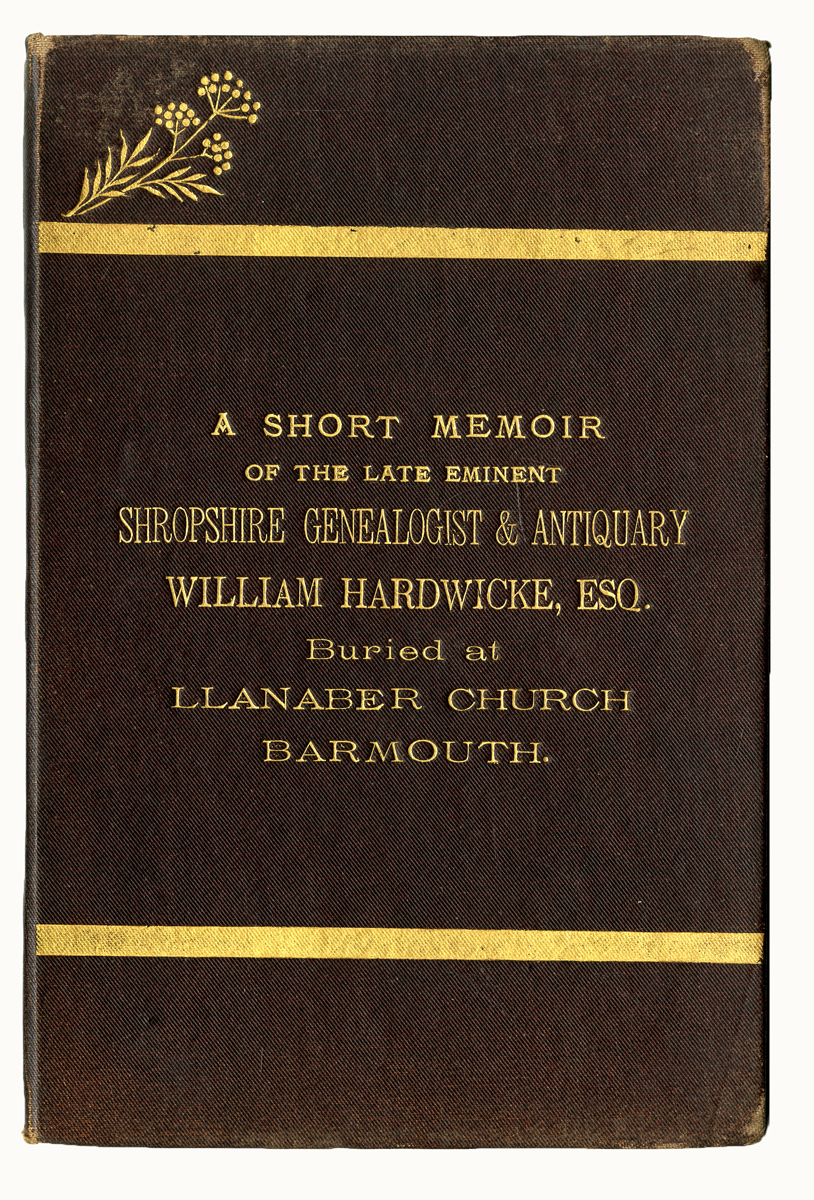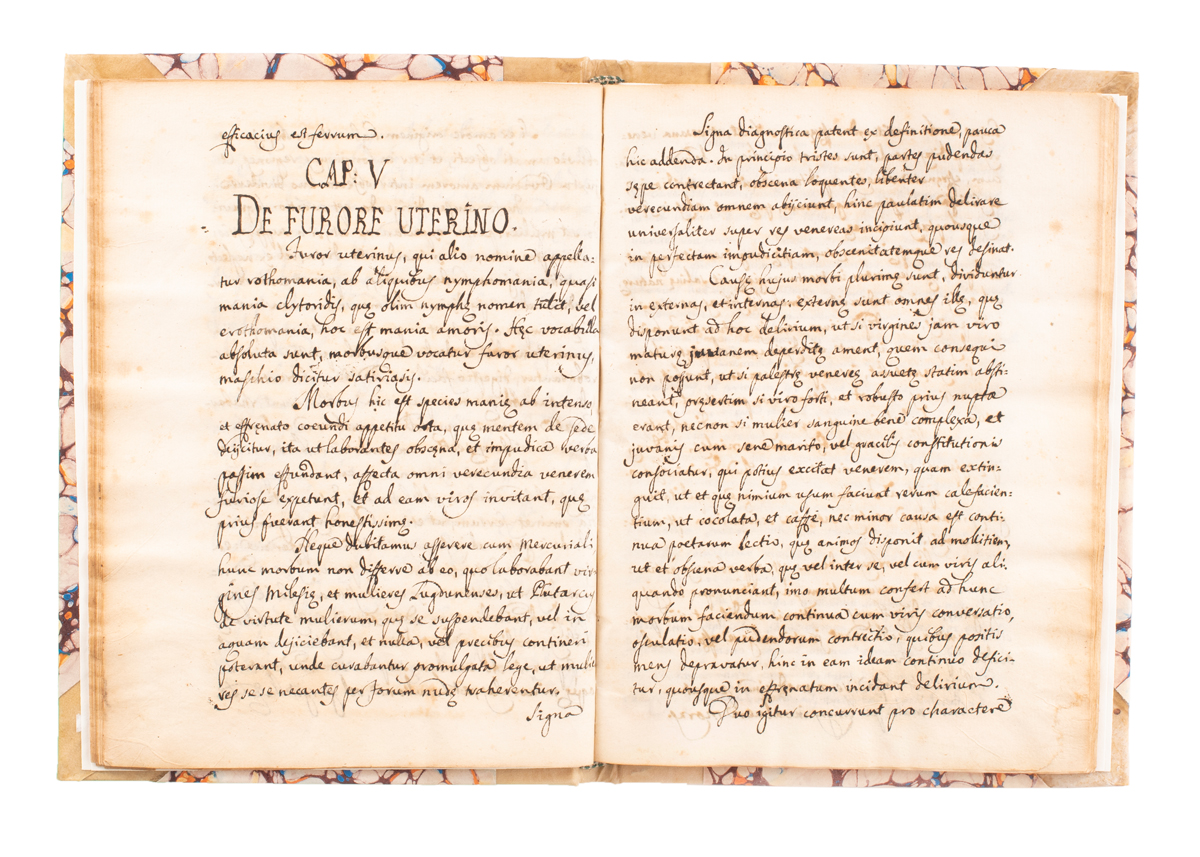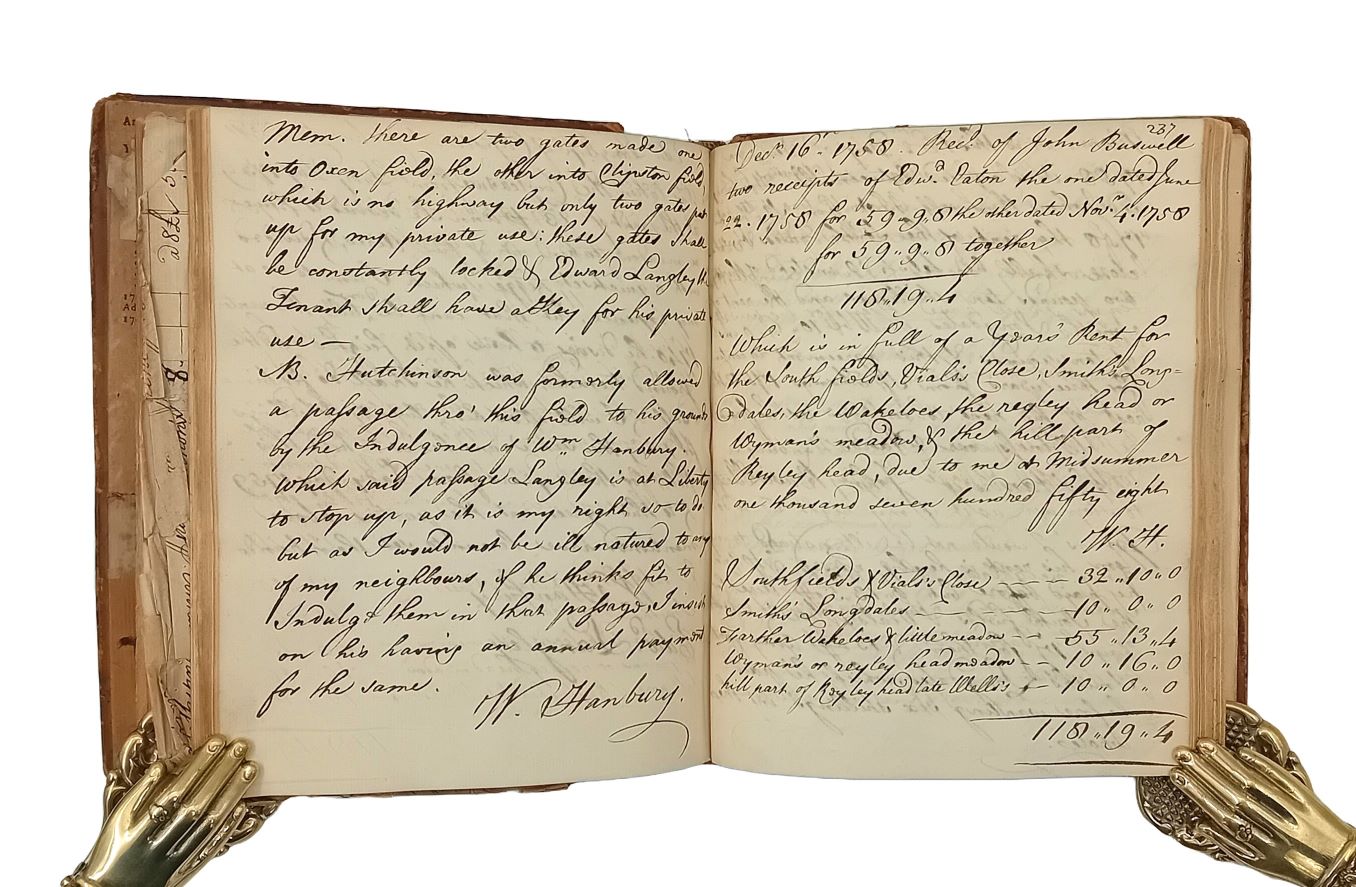
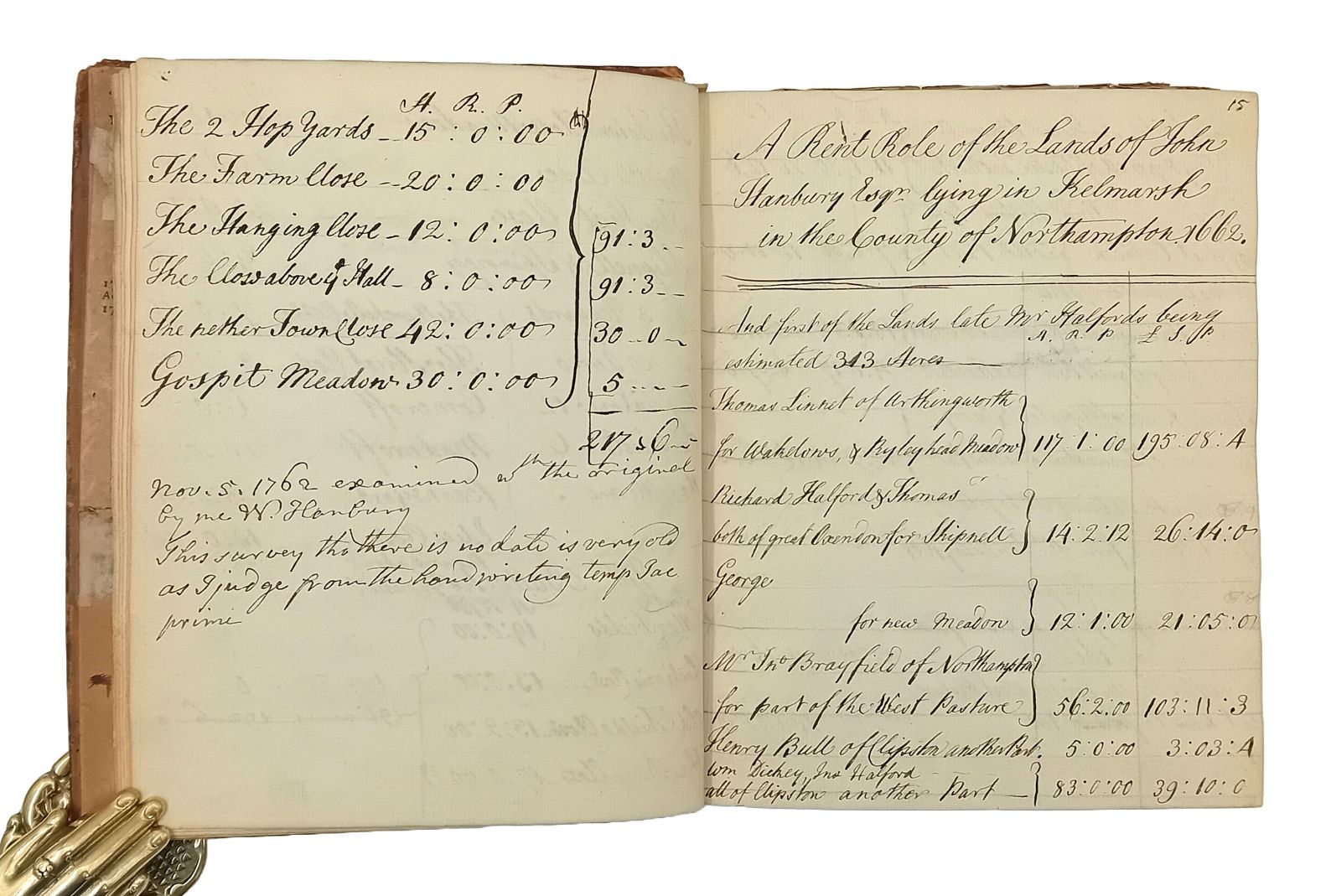
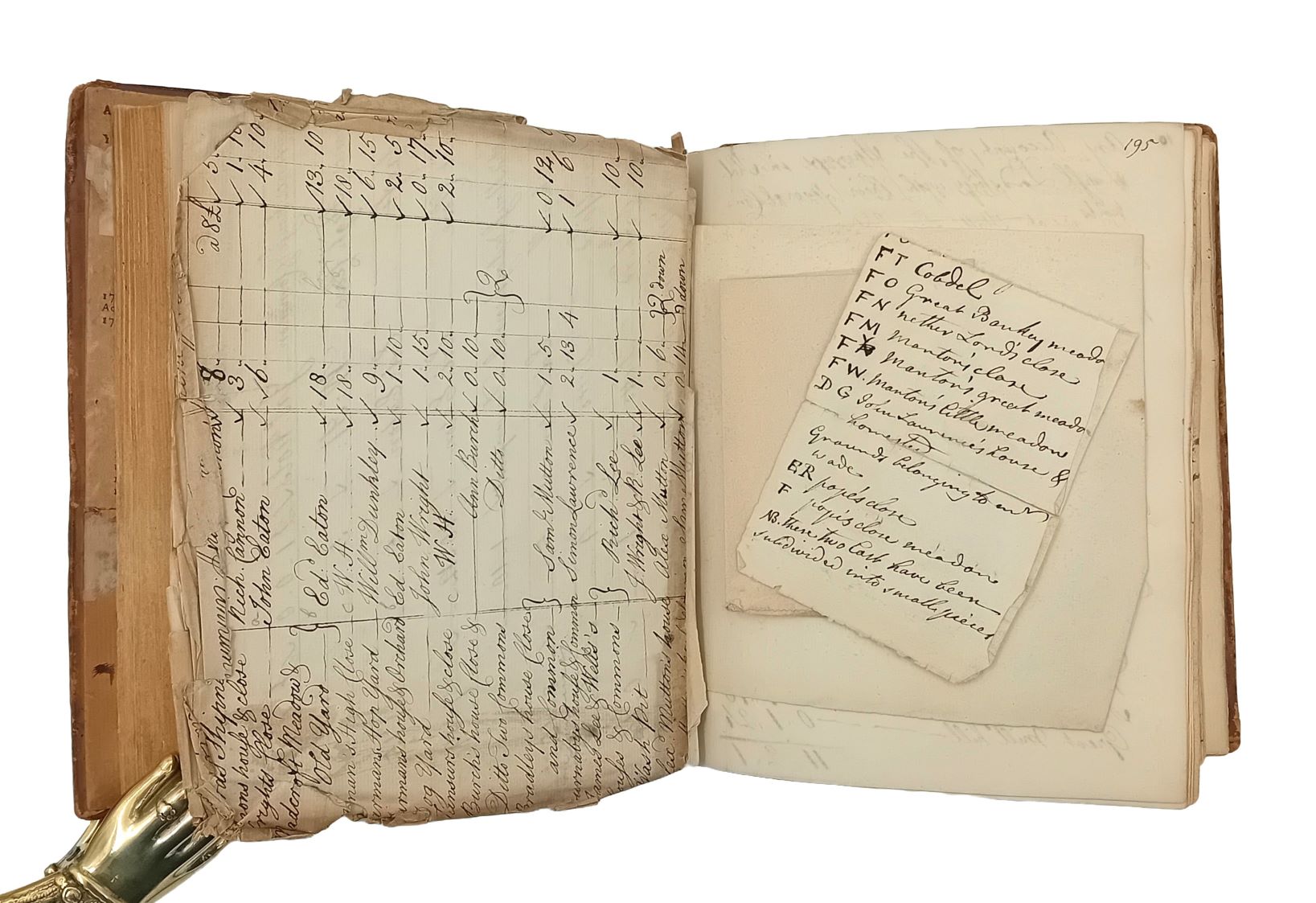
[KELMARSH HALL].
HANBURY, William. Manuscript ledger book of documents relating to the Kelmarsh estate.
Northamptonshire, c. 1762.
4to, pp. 320, hand-numbered, with eleven accounting documents loosely inserted, and an engraved plate of Jacob’s Vision between p. 204-5, manuscript in black ink in two hands, of William Hanbury and an amanuensis, some blank leaves; offsetting to endpapers, else very good, in contemporary calf, double gilt-fillet border, spine gilt in compartments with red morocco lettering piece, corners worn, boards detached; old bookseller’s ticket and printed tabular account of the land tax from the Revolution to 1742, and armorial bookplate of William Hanbury to the front pastedown.

Added to your basket:
HANBURY, William. Manuscript ledger book of documents relating to the Kelmarsh estate.
A detailed account of the workings of Kelmarsh Hall and related properties, one of Northamptonshire’s foremost estates. The majority of the work consists of transcriptions of earlier documents, collated against the originals by William Hanbury himself in 1762, including documents thought to date from the era of James I. They document the various parcels of lands belonging to the estate, naming them and providing their acreage, the values of the land holdings, and rent rolls giving a detailed breakdown of the names and yields of the tenant farmers. Also included are some manuscript bills detailing business and trade transactions, a list of nursery plantations, and statistics on the acquisition of new land, including from the Craven estate. The last section, a book of reference to the map of the ‘Mannor of Kelmarsh’ in 1739 provides accounts of various plots and the rents commanded from them. The book concludes with an alphabetised index.
The Kelmarsh estate survives today in much the same form as it did in the time of Hanbury, with Kelmarsh Hall at its heart. The house was built by William Hanbury in the Palladian style to a James Gibbs design, substantially using funds obtained through his advantageous marriage to a niece of Viscount Bateman, and was described by Pevsner as ‘a perfect, extremely reticent design … done in an impeccable taste’.
